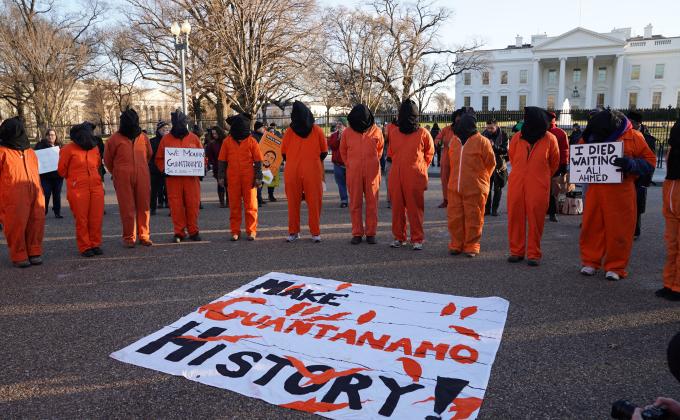The arrest of a returning foreign fighter earlier this month in Spain, suspected of planning a terrorist attack, highlights the persistence of the jihadi threat in Europe. This follows a spate of terrorist attacks and plots across Europe in the latter part of 2020, notably in France and Austria. The sum of these attacks reflects well the current threat from jihadi terrorism, which we will continue facing in 2021. The jihadi threat will likely retain two main dimensions: one linked to the caliphate’s legacy; and the other stemming from fringe extremists.
The Caliphate’s Legacy
ISIS’s caliphate in Iraq and Syria no longer exists, but its legacy is set to weight on the terrorist threat in Europe for years, and probably decades to come. There are two key aspects to this legacy worth highlighting. First, the caliphate has created an unprecedented contingent of violent extremists and sympathisers that will need to be managed over the long term. This contingent includes first and foremost the so-called “returnees”. While a majority of returnees may have distanced themselves from ISIS or violent extremism, others will likely remain committed to the ideology, and perhaps engaged in propaganda, recruitment or even violent activities, as illustrated by the recent arrest in Spain. Some of these returnees already pose a challenge in prison (again a minority, but one that was involved in plots or recruitment activities), and they will continue to raise concern upon their release (in spite of low recidivism rates).
Next are the so-called “frustrated travellers” who were arrested and jailed before they could join ISIS in Syria. Not having been able to demonstrate their commitment to the cause, nor possibly having suffered disillusion with ISIS (unlike many returnees), some of these individuals may be particularly dangerous, as illustrated by last year’s attacks in Vienna and Lugano, perpetrated by such frustrated travellers. Then is the larger group of individuals who radicalised during the caliphate’s era and sympathised with the jihadi ideology, without seeking to travel to Syria. Many of these individuals were simply attracted by the “coolness” of ISIS propaganda, identifying with a certain subculture and a sense of belonging, and have already turned to new fashionable attitudes or returned to petty crime. Other sympathisers will remain convinced over the long term, however, and contribute to the further spreading of this toxic ideology in Europe. Finally, the hundreds of European foreign fighters currently detained in Syria, in addition to those still fighting in the region, will remain a key concern for years to come – whether they are repatriated or not. Not all of them are equally dangerous, but among them are some very dangerous individuals (well-connected and trained) who might seek to plan or incite violent actions in Europe.
There is therefore an unprecedented contingent of potential jihadi terrorists, preachers, recruiters, facilitators and sympathisers in Europe. However, the caliphate’s legacy is not just about people, as it is also about ideas. There is an incalculable number of videos, audios, writings of all kinds that were produced by ISIS propaganda machinery, and which will continue to circulate online for many years. More significantly, the key legacy will be the “myth” of the caliphate as a life-changing experience, as a possible ideal to inspire future generations of terrorists, as the apex of a never-ending war between “true believers” and “non-believers”. Anecdotes and stories about battles, life on the front, or good life under the caliphate will continue to nurture this myth for decades to come. The ashes of the caliphate are equally nurturing the beast: the illegal detention of European foreign fighters and children in Northeast Syria in what is now called “a new Guantanamo” feeds the jihadi narrative and demeans the European value-based counter-terrorism approach. The caliphate’s contingent will continue feeding the myth; and in turn, the myth allows the contingent to continue striving and recruiting.
Fringe Extremists
The second dimension of the jihadi threat essentially postdates the fall of the caliphate, and stems from individuals on the fringes of known extremist milieus. A number of recent attacks or plots in Europe were committed by individuals that were unknown from the security services, with little or no connections with known radicals, such as the attack on the former offices of Charlie Hebdo in September 2020. These extremists mostly radicalised in the post-caliphate era, thus absent the strong pull factor of the “appeal of the caliphate”, and without the opportunity – or certainly less so – to travel and wage jihad abroad. In several cases, these terrorist plotters did not even pledge allegiance to a specific group, nor did any group claim the attack. Some call them “lone wolves” or “lone actors”, some call this “impulsive terrorism” or “fanaticism”. While there is nothing new in attacks perpetrated by lone actors or individuals unknown from the services, it is important to recognise the existence of this more elusive form of extremism post-caliphate, and to understand how this threat differs from the caliphate’s legacy.
The future jihadist threat in Europe
While these two configurations of the jihadi threat are clearly very different, one should not necessarily conceive them as entirely disconnected. Post-caliphate fringe extremists can consume ISIS virtual material, interact with ISIS contingent and be inspired by them. Allegedly, for instance, the murderer of French teacher Samuel Paty was in contact with a Russian fighter in Syria. Conversely, impulsive fringe extremists could maintain the threat high through their acts, and perhaps even emulate similar actions from hard-core jihadists. Altogether, these two configurations suggest that jihadi terrorism will remain a key security concern for a long time to come. The terrorist threat might be lower than it was in 2014-16, but the “new normal” is a higher threat level than during previous decades – something that could still be further exacerbated by other phenomena, such as far-right extremism, polarisation or bad counter-terrorism policies.
Of course, jihadi terrorism will not be the only threat on the horizon in 2021. The violent assault on the US Capitol on 6 January was a stark reminder of the threat from right-wing extremism and other potentially violent conspiracy movements, which are present in Europe as well. Whereas European counter-terrorism efforts were largely focused on the jihadi threat over the past years, 2021 will call for a simultaneous focus on a persistent jihadi threat and the greater danger from other forms of violent extremism.
Overall, this analysis indicates that a long-term commitment to preventing and responding to terrorism is needed. The counter-terrorism arsenal has been strengthened quite significantly over the past few years across Europe, in response to the unprecedented jihadi threat. In light of the current threat environment, it should not be dismantled or neglected any time soon. Rather, it is important to consolidate what has been achieved, and adjust the existing instruments to better cope with other forms of extremism, mainly right-wing extremism. We do not necessarily need new instruments or powers, but we must remain vigilant and agile in responding to an evolving threat, while avoiding any form of excessive over-reaction.
Photocredit: Roman Yanushevsky/Shutterstock








